The five best body scan meditations for anxiety relief include Progressive Muscle Relaxation, Breath-Focused Body Awareness, Loving-Kindness Body Scan, Mindful Body Sensation Exploration, and Guided Imagery Body Scan. These techniques help you systematically relax your body, increase self-awareness, and reduce stress. You'll learn to focus on physical sensations, use your breath as an anchor, cultivate self-compassion, and visualize calming imagery. Regular practice of these meditations can greatly improve your ability to manage anxiety, enhance sleep quality, and promote overall relaxation. By exploring these methods, you'll discover powerful tools to reconnect with your body and find inner peace.
Key Takeaways
- Progressive Muscle Relaxation Scan systematically tenses and relaxes muscle groups, reducing anxiety and enhancing body awareness.
- Breath-Focused Body Awareness Meditation uses breath as an anchor to explore bodily sensations and manage anxiety symptoms.
- Loving-Kindness Body Scan Practice combines body scanning with self-compassion, fostering body acceptance and reducing stress.
- Mindful Body Sensation Exploration encourages deep investigation of physical sensations, cultivating acceptance and reducing anxiety levels.
- Guided Imagery Body Scan combines physical awareness with vivid mental imagery, personalizing relaxation techniques for effective anxiety management.
Progressive Muscle Relaxation Scan
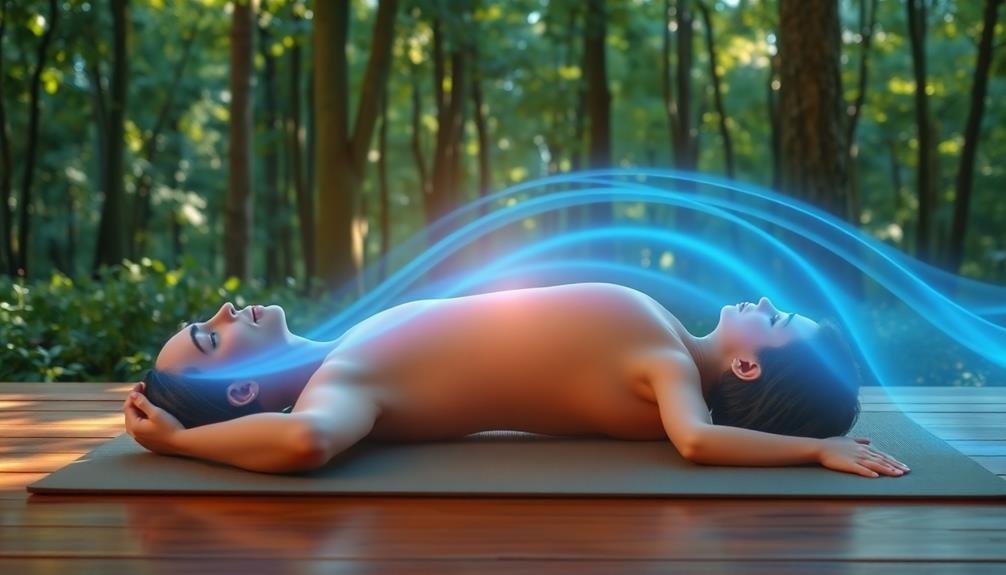
A Progressive Muscle Relaxation Scan is a powerful technique for reducing anxiety and tension throughout your body. This method involves systematically tensing and relaxing different muscle groups, allowing you to become aware of physical sensations and release built-up stress.
To begin, find a comfortable position and close your eyes. Start with your feet, curling your toes and tensing the muscles for 5-10 seconds, then release. Notice the difference between tension and relaxation. Move up to your calves, thighs, and buttocks, repeating the process.
Continue with your abdomen, chest, hands, arms, shoulders, neck, and face. As you progress, focus on the sensations in each area. You'll likely notice warmth, heaviness, or tingling as muscles relax. If your mind wanders, gently bring your attention back to the current muscle group.
This practice not only relieves physical tension but also calms your mind. Regular practice can improve your body awareness, making it easier to recognize and address stress before it builds up.
It's an effective tool for managing anxiety, improving sleep quality, and promoting overall relaxation.
Breath-Focused Body Awareness Meditation
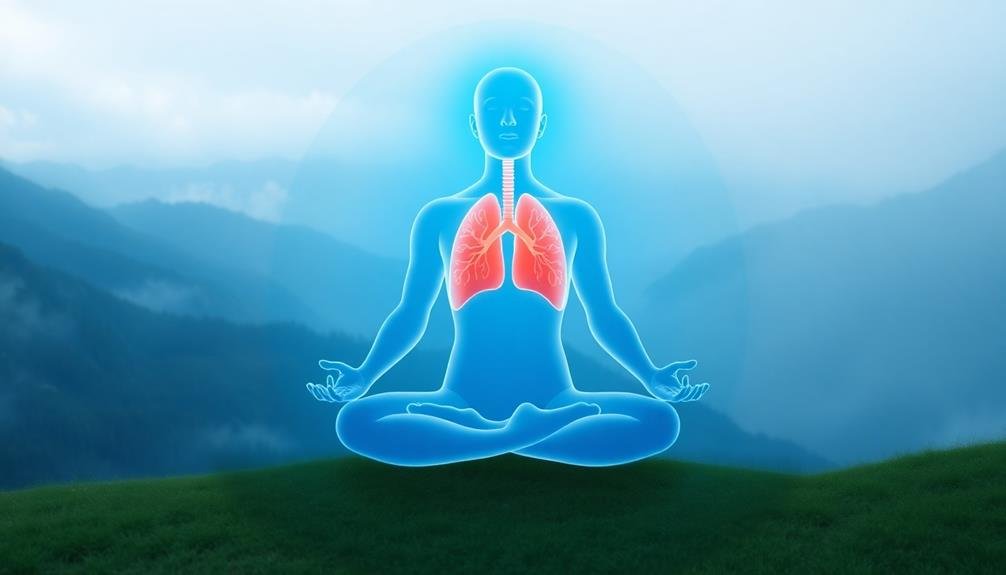
While Progressive Muscle Relaxation focuses on tension and release, Breath-Focused Body Awareness Meditation shifts attention to the breath as an anchor for exploring bodily sensations. This technique helps you cultivate a deeper connection with your body and can greatly reduce anxiety.
To begin, find a comfortable position and close your eyes. Take a few deep breaths to settle in. Now, focus your attention on your breath, noticing the sensation of air moving in and out of your body.
As you breathe, scan your body from head to toe, observing any sensations without judgment. Start with your head, noticing any tension or tingling. Move down to your face, neck, and shoulders. Continue through your arms, chest, and abdomen. Pay attention to how each area feels as you breathe.
Proceed to your lower back, hips, legs, and feet. If your mind wanders, gently bring your focus back to your breath and body. This practice helps you become more aware of physical sensations associated with anxiety, allowing you to address them more effectively.
With regular practice, you'll develop a heightened sense of body awareness and improved ability to manage anxiety symptoms.
Loving-Kindness Body Scan Practice

Loving-Kindness Body Scan Practice combines the traditional body scan meditation with elements of loving-kindness or metta meditation. This practice helps you cultivate self-compassion and reduce anxiety by directing positive emotions towards different parts of your body.
To begin, find a comfortable position and close your eyes. Start at your feet and slowly move your attention upwards, focusing on each body part. As you do this, direct loving-kindness towards each area using phrases like "May my feet be healthy and strong" or "May my hands be capable and gentle."
Here's what you can expect from this practice:
- Increased self-compassion and body acceptance
- Reduced anxiety and stress
- Improved body awareness
- Enhanced emotional regulation
- Greater overall sense of well-being
As you progress through the body scan, pay attention to any areas of tension or discomfort. Instead of trying to change these sensations, simply acknowledge them with kindness and understanding.
This practice can help you develop a more positive relationship with your body and reduce anxiety-related physical symptoms. With regular practice, you'll likely notice a decrease in overall anxiety levels and an increased ability to respond to stressful situations with greater ease and self-compassion.
Mindful Body Sensation Exploration
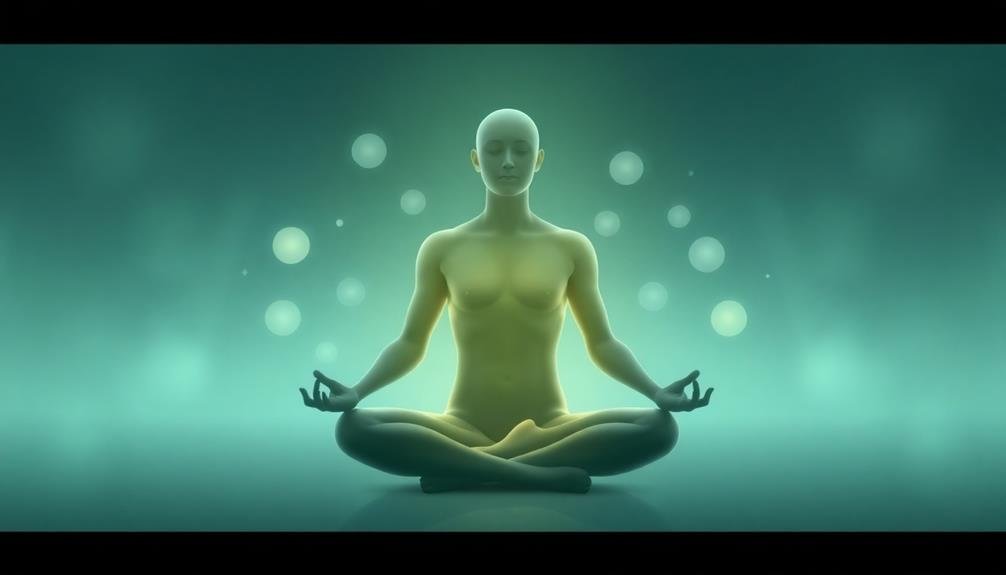
Mindful Body Sensation Exploration takes the body scan practice a step further by encouraging a deep investigation of physical sensations. This technique helps you cultivate a heightened awareness of your body's internal experiences, reducing anxiety by grounding you in the present moment.
To practice, start by focusing on a specific body part. Instead of simply noting its presence, dive deeper into the sensations you're experiencing. Pay attention to temperature, pressure, tingling, or any other physical feelings. Don't judge these sensations; simply observe them with curiosity.
As you explore your body, you might encounter areas of tension or discomfort. Rather than trying to change these sensations, approach them with acceptance and compassion. This practice can help you develop a more nuanced understanding of your body's responses to stress and anxiety.
| Body Part | Sensation | Observation |
|---|---|---|
| Shoulders | Tightness | Non-judgmental awareness |
| Stomach | Butterflies | Acceptance of anxiety |
| Chest | Warmth | Curiosity about sensation |
Guided Imagery Body Scan
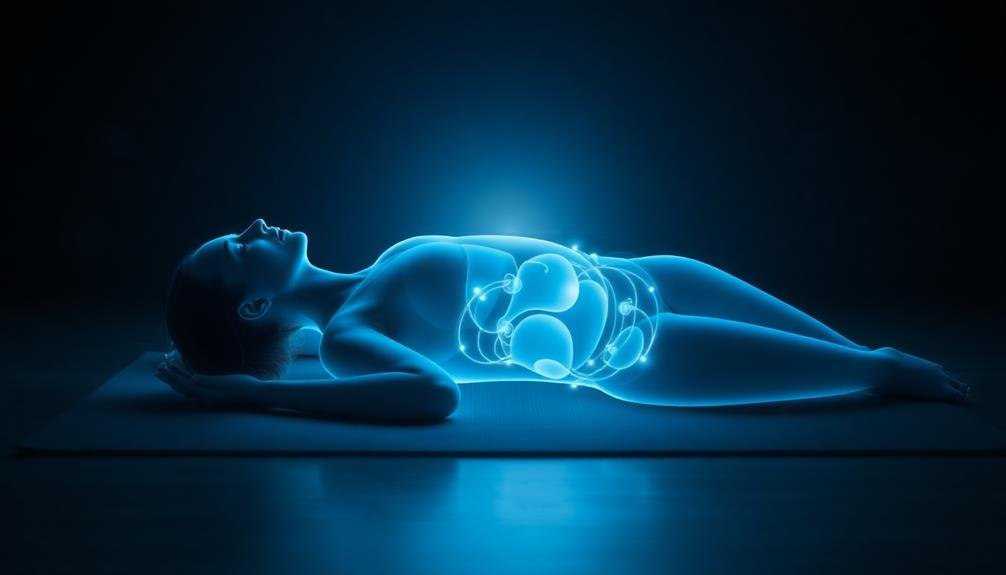
Through guided imagery, body scan meditations take on a new dimension, combining physical awareness with vivid mental pictures. You'll journey through your body, creating mental images that correspond to each area you focus on. This technique enhances relaxation and promotes a deeper connection between mind and body.
As you practice guided imagery body scans, you might visualize:
- A warm, golden light flowing through your body
- Tension melting away like ice in the sun
- Muscles relaxing like loosening knots
- Breath moving like gentle waves
- Stress leaving your body as colorful smoke
Start by finding a comfortable position and closing your eyes. Listen to a guided meditation or create your own script. Move your attention slowly from your toes to the top of your head, pausing at each body part.
As you focus, create a vivid mental image related to relaxation or healing for that area. Let the imagery deepen your awareness and amplify the relaxation response.
With practice, you'll develop a rich library of personal imagery that resonates with your experiences. This personalized approach can make body scans more engaging and effective for managing anxiety.
Frequently Asked Questions
How Long Should a Body Scan Meditation Session Typically Last?
You can tailor body scan meditation to your schedule. It typically lasts 10-45 minutes, but even 5 minutes can be beneficial. Start with shorter sessions and gradually increase duration as you become more comfortable with the practice.
Can Body Scan Meditations Be Done While Lying Down or Sitting?
You can do body scan meditations while lying down or sitting. Both positions work well, so choose what's most comfortable for you. Lying down may help you relax more, but sitting can keep you alert if you're prone to dozing off.
Are There Any Potential Side Effects of Practicing Body Scan Meditations?
You might experience temporary discomfort or emotional reactions during body scan meditations. Some people report increased awareness of physical sensations or past traumas. Don't worry; these effects are usually mild and diminish with practice. If you're concerned, consult a professional.
How Often Should One Practice Body Scan Meditation for Optimal Results?
You'll benefit most by practicing body scan meditation daily for 10-20 minutes. If you're new, start with shorter sessions and gradually increase. Consistency is key, so find a time that works for you and stick to it.
Can Body Scan Meditations Be Combined With Other Relaxation Techniques?
Yes, you can combine body scan meditations with other relaxation techniques. Try pairing them with deep breathing, progressive muscle relaxation, or visualization exercises. This combination can enhance your overall relaxation experience and boost anxiety relief.
In Summary
You've now explored five powerful body scan meditations for anxiety relief. By incorporating these practices into your routine, you'll develop a stronger mind-body connection and learn to manage stress more effectively. Remember, consistency is key. Start with just a few minutes daily and gradually increase your practice time. Be patient with yourself and celebrate small improvements. With regular practice, you'll find these techniques become valuable tools in your anxiety management toolkit.
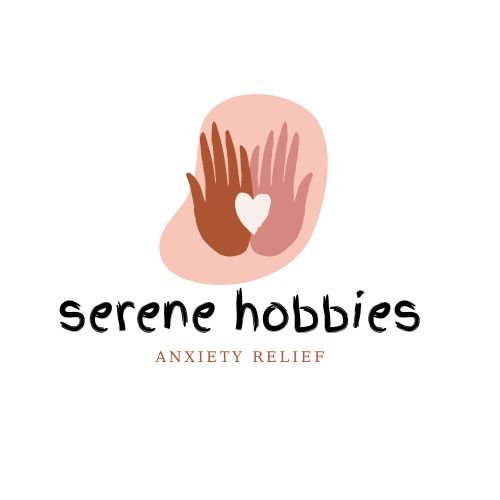

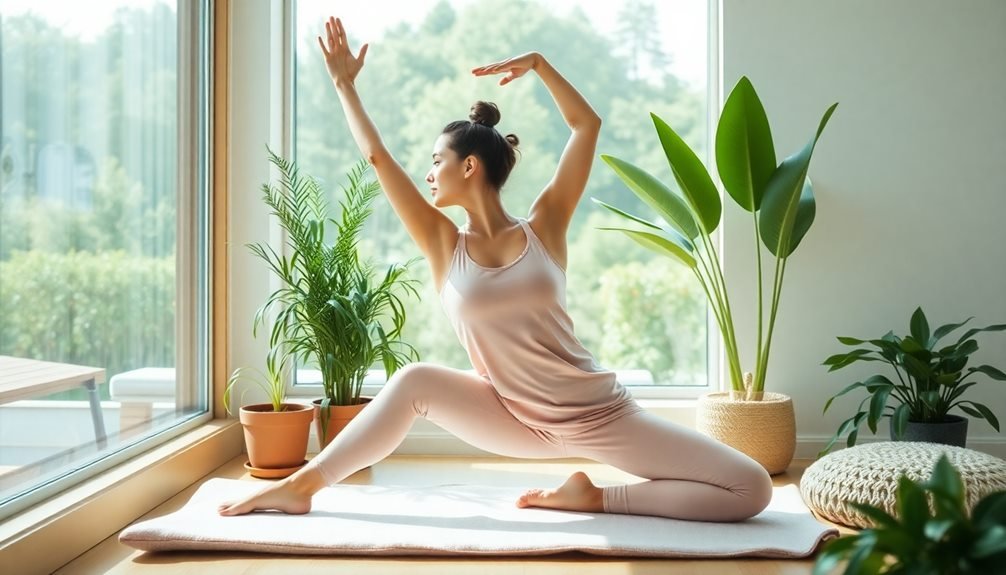
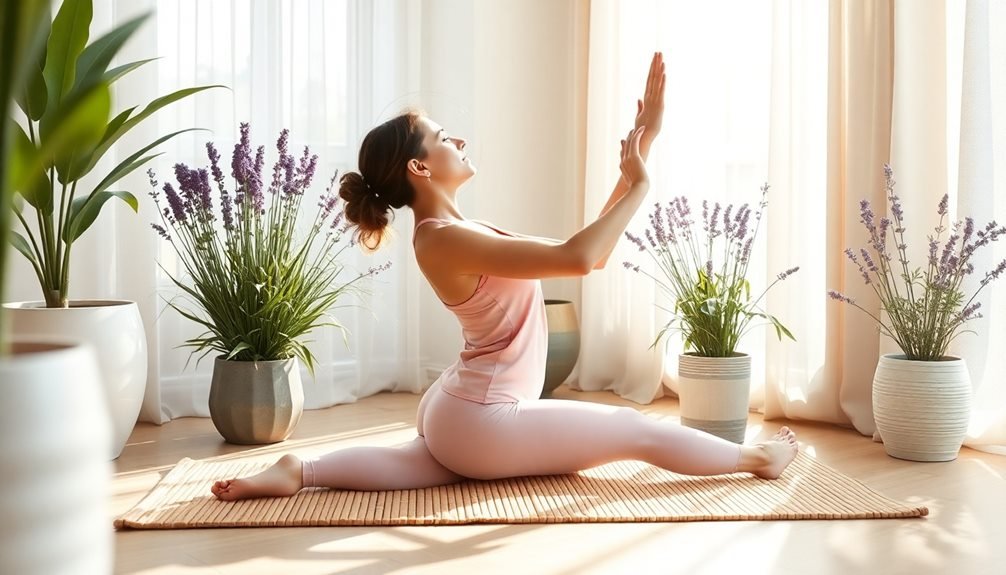
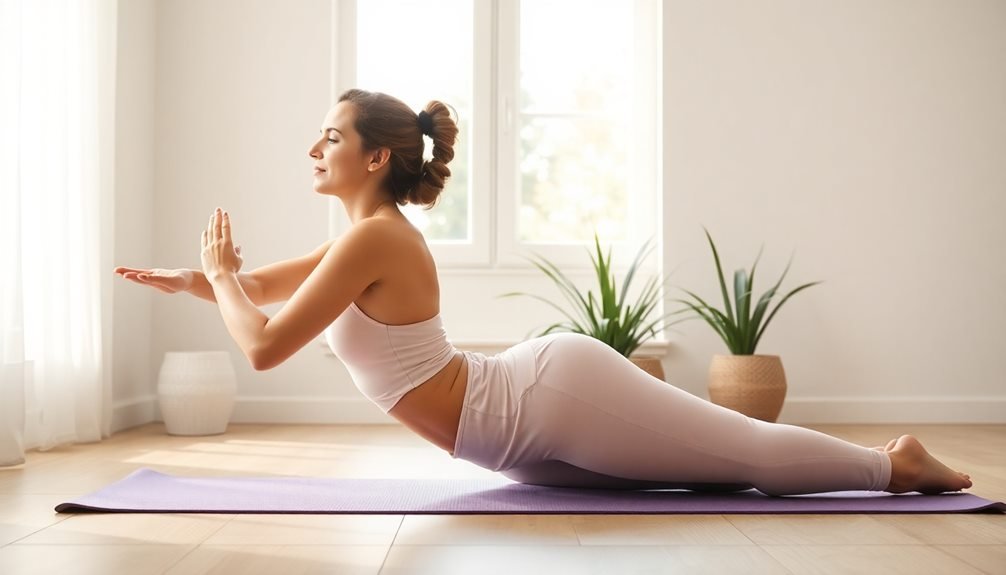
Leave a Reply